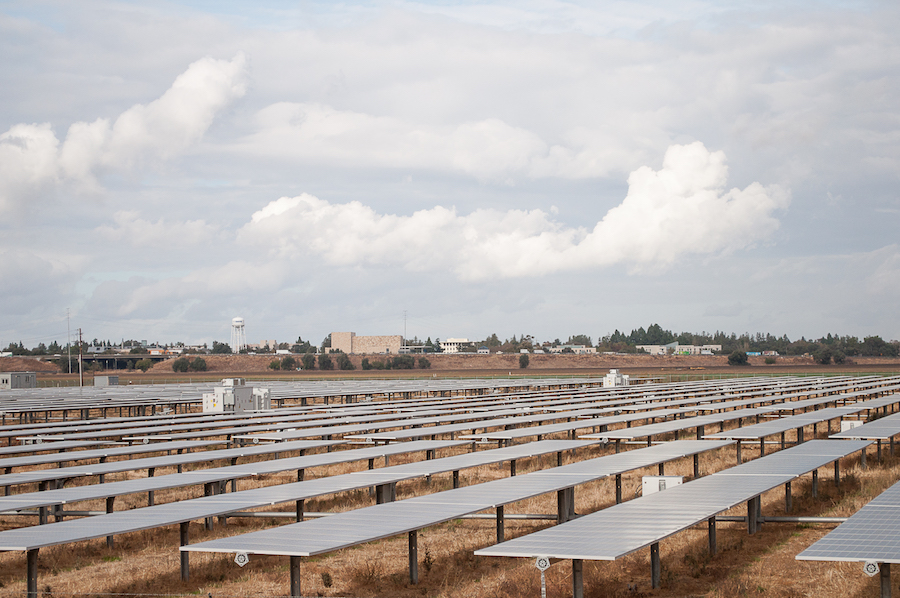
Agricultural land can be spared while allowing solar energy to flourish
A case study in “Environmental Science & Technology” demonstrated that all of the energy needs of California can be provided by solar panels in the Central Valley. By using existing built environments, salt-affected lands, contaminated lands and water reservoirs, solar energy developers can meet the energy needs of the future without encroaching into prime agricultural land.
Madison Hoffacker is first author of the study and serves as a renewable energy scientist in the Department of Land, Air and Water Resources at UC Davis. Hoffacker created maps from national databases and satellite imagery to model both the solar energy potential of the land in the Central Valley as well as what types of activities are currently performed on these spaces.
“A lot of rooftop spaces in the Central Valley are rather large, and if you take advantage of those facilities or commercial buildings, there’s a lot of opportunities in developed areas,” Hoffacker said. “Especially because rooftops on commercial areas are flat, it’s perfect ground space to work around.”
Developed areas with large structures, such as warehouses and production facilities, could be fitted to use most of their energy from solar panels, bringing down the energy costs of food production and transportation.
“In hiking in southern Germany last summer, I was struck by the near universal use of solar panels on barns and outbuildings, methane collectors on many dairy barns, and biofuel generators from manure,” said Michael Allen, a distinguished professor emeritus in the Department of Microbiology and Plant Pathology at UC Riverside, in an email interview. “The key here is a diverse portfolio of options for generating on-farm energy for direct use, and sometimes selling of energy while sustaining food production.”
Besides built environments with existing structures, Hoffacker’s team found land contaminated with salt or chemical waste could be used for solar energy production without impinging on other economic pursuits. Many contaminated sites were within 10km of urban areas, reducing the transmission infrastructure necessary for transporting energy from where it is generated to where it is needed.
“Contaminated sites should be an easy location to put panels, same with salt-affected areas,” Hoffacker said. “If you have land that can’t produce anything, and it’s isolated in an area where it won’t return to its natural habitat, why not take advantage? At the same time, you can help recover the land by letting things grow underneath the panel.”
In Davis, two contaminated waste sites exist. One is located south of UC Davis, where experiments on radiation exposure to animals left soil and groundwater contaminated, and another is to the east of Davis, where storage of pesticides and herbicides by Frontier Fertilizer similarly contaminated the earth and water. At the Frontier Fertilizer site, solar panels are being used to help remediate the land by generating power and heating the area. Significant cost savings are being reported, as well as a quickening of the groundwater cleanup process — an estimated change from 150 to 30 years due to the use of solar energy.
As food and energy needs grow and change in the next century, sustainable and renewable food and energy production methods in California will be sorely needed. Solar energy developments in the Central Valley which don’t compete with prime agricultural land or existing natural ecosystems could be enough to power California many times over.
Written by: George Ugartemendia — science@theaggie.org



